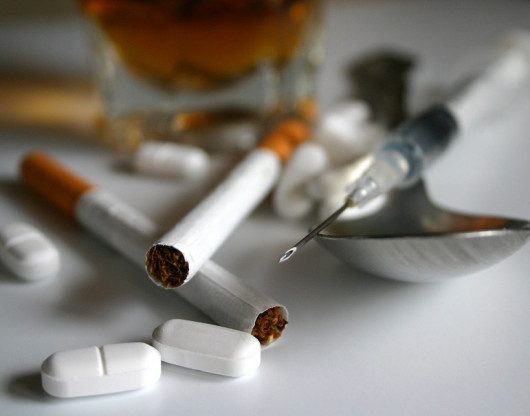Society surrounds drug addiction with a lot of stereotypes and misguided beliefs that prevent people from getting treatment in time and force them into denial of their problem. In fact, addiction is a medical condition of chronic nature that quickly gets out of a person’s control due to the chemical influence drugs have on the brain. Although addiction is frequently associated with poverty and low social status, it can be triggered by many factors and touches lives of people from all possible backgrounds.
What Does Lead People to Try Drugs

Different drugs have different effects on the body, but the most favored and addictive properties are the feelings of euphoria, relaxation and mental exhilaration that they induce. People may seek them for various reasons, from struggling with a mental illness to having to face some family or financial problems. There is no single set of causes that leads a person to try drugs for the first time. There are, however, some common reasons why so many people find it hard to accept their addiction and look for professional help.
First of all, many don’t recognize the true beginning of the addiction, thinking that it’s okay to use just once or only occasionally. The truth is, it doesn’t take much to get addicted to opioid drugs. A person might think they’re just experimenting and can quit whenever they want, but that illusion starts to fade when the addiction develops and becomes too obvious to ignore.
Another reason for denial is peer pressure and social stigma. Addiction is still viewed by the majority as a sign of weakness, and it imposes feelings of shame and vulnerability that force a person to hide their addiction although they know it’s detrimental and life-threatening.
Finally, a tough financial situation can be both a true concern and a powerful tool to justify the delay in seeking treatment to yourself and your loved ones. It’s important to know that there are countless available free substance abuse programs (Addiction Resource provides an overview) that include in- and outpatient treatment centers, counseling, assistance in detox and various types of therapy.
Addiction and Withdrawal Symptoms
Addiction affects both physical and mental state of a drug user. The pleasurable effects of drugs are achieved by regulation of the production of certain chemicals called neurotransmitters, like dopamine. You can think of the brain as a communication center between external and internal stimuli, your actions, emotions, and feelings. In these terms, neurotransmitters pass messages back and forth, signaling the brain when you need to perform an action. Drugs frequently boost the production of dopamine, a neurotransmitter responsible for motivation and the feeling of pleasure. Dopamine makes eating, exercising and having sex pleasurable for you, hence creating or reinforcing the habit that affects your body in a beneficial way.
With time, the brain adjusts the levels of dopamine and changes your perception of what feels extraordinary and what is simply your normal state. This is why higher and higher doses of the drug are needed to reach the blissful state of euphoria, as well as it is the main reason of overdose. This tolerance also contributes to withdrawal symptoms, since the body gets used to the presence of the drug and reacts negatively to its absence.

Simply put, the longer you use, the harder it is to quit. That’s why it’s extremely important to notice addiction on its earliest stages and consult with a medical professional at one of the private or free rehab centers.
Signs of drug abuse and addiction you should look out for include:
- anxiety or depression;
- high irritability;
- headaches and confusion;
- loss of interest in hobbies and neglect of responsibilities;
- withdrawal from family and social circle;
- tremors;
- nosebleeds;
- rapid weight loss or gain;
- lack of concern for self-care;
- need for money for unusual or undisclosed purposes.
When a person enters a treatment program, the first step is medically assisted detox to get rid of the drug and enable the patient to work on the underlying issues that led to the development of the addiction with a clear head. Medication is usually required at this stage in order to ease withdrawal symptoms and encourage the person to see the program through. Withdrawal symptoms can be quite severe and may include:
- insomnia;
- irregular heartbeat;
- flu-like symptoms including cough, fever, sweating and shaking;
- concentration and attention problems;
- nausea;
- constant low mood or depression;
Recovery Occurs in More Stages
1. Acknowledgment
The first step towards recovery is acceptance of your condition. Many tend to underestimate the issue or find justification for avoiding enrolling in a treatment program. While it can be truly hard to acknowledge addiction, this stage is critical. During this period, people gain awareness about the existence of the problem through conversations with friends and family members, legal or financial issues. Individuals also find the motivation to receive treatment when they realize how addiction influences their relationships and everyday life.
2. Communication and Exploration of Options
The second stage is focused on communication and starting a conversation with people closest to you about your next steps. Addiction affects everyone around the addicted, and it’s important for them to understand what their families and friends are going through. At the same time, it’s equally vital to get full support and encouragement to counter the feelings of loneliness and isolation. This is the time to learn more about addiction and determine which of the many options is most comfortable and suitable for you. There are private and free drug rehab centers that offer inpatient or outpatient treatment, as well as there are various separate therapy and detox options.
3. Enrolling and Completing a Treatment Program
During this stage, patients go through withdrawal and cognitive behavioral therapy to help them learn healthy coping mechanisms and reactions to triggers. Medication is usually administered to assist the detox or treat accompanying mental illnesses like depression and anxiety. In addition, some holistic techniques like yoga, meditation, and nutritional therapy may be applied to facilitate recovery and help the patients reintegrate into society.
4. Maintenance and Prevention of the Relapse

The final stage doesn’t really have a deadline. Addiction is a chronic condition, meaning a person has to keep an eye on their thoughts and cravings their whole life to avoid relapse. In fact, relapse occurs in as much as 85% of patients after they undergo treatment. It doesn’t mean that the rehabilitation wasn’t effective, as well as it doesn’t indicate a personal weakness. Individuals remain at increased risk of relapse for many years after they successfully complete the treatment.
While addiction is a serious condition that can be lethal if left untreated, it’s far from being unmanageable. With the existence of free drug addiction treatment and numerous relapse prevention programs, it’s surprisingly easy to get the help you need.
About the Author
Thanush Poulsen is a Danish columnist who is concerned about the problems of public health. All his articles aim to raise people’s awareness of this issue.



